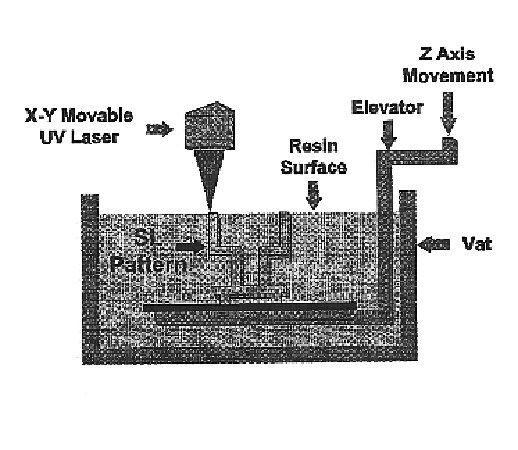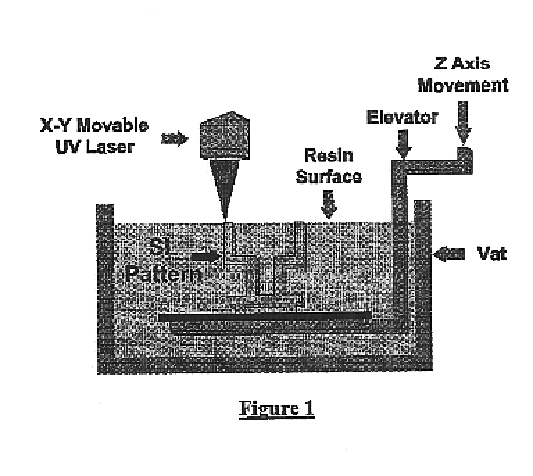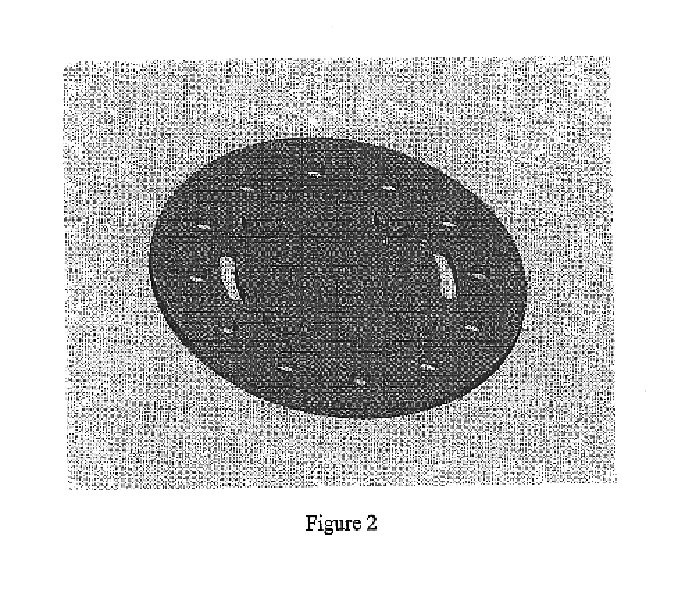Fabrication of a polymeric prosthetic implant
- Summary
- Abstract
- Description
- Claims
- Application Information
AI Technical Summary
Benefits of technology
Problems solved by technology
Method used
Image
Examples
example 1
Materials and Methods
The materials used to produce the prosthetic implant were; Poly(propylene fumerate) (PPF) (prepared in the Bioengineering Department, Rice University, Houston, Tex.), Bisacylphosphine Oxide (BAPO) (Irgacure 819) (CIBA Specialty Chemicals Additives Division, Tarrytown, N.Y.), and Chloroform C-295 (Fisher Scientific, Fair Lawn, N.J.). Materials were weighed and mixed in a standard fume cabinet; One gm of BAPO was dissolved in 10 gm of chloroform and mixed thoroughly, 0.5 ml of the BAPO / chl mixture was added to 10 gm of PPF and mixed thoroughly. The resulting resin mixture was poured into a 3½-inch diameter culture dish to a depth of 2 mm.
The stereolithography machine (3D Systems SLA 250, Valencia, Calif.) consists of a servomechanism, which controls the beam of a UV laser in the X and Y horizontal axis, a tank of liquid monomer resin, and a motorized build platform moving in the Z-axis (i.e., vertically up and down in the tank of resin). A build platen is located ...
example 2
Materials and Methods
The materials used to prepare the device were; Poly(propylene fumarate) (PPF) (Rice University-Bioengineering Department, Houston, Tex.), Diethyl fumarate (DEF) solvent, (Fisher Scientific, Fairlawn, N.J.), Bisacylphosphine Oxide (BAPO) photoiniator (Irgacure 819) (CIBA Speciality Chemicals Additives Division, Tarrytown, N.Y.). Materials were weighed and mixed in a standard fume cabinet. Two grams of BAPO were dissolved in 200 g of DEF and mixed thoroughly. The BAPO / DEF mixture was then added to 280 g of PPF and mixed thoroughly. The quantities of DEF and PPF used resulted in a mixture that had similar viscosity properties to the native resin normally used with the SLA machine. The DEF / PPF resin was allowed to stand for 30 minutes to allow air bubbles trapped in the mixture to dissipate.
Method
The stereolithography machine used was an SLA 250 / 40 (3D Systems Valencia, Calif.). The SLA 250 / 40 consists of a servomechanism, which controls the beam of a UV laser in th...
PUM
| Property | Measurement | Unit |
|---|---|---|
| Thickness | aaaaa | aaaaa |
| Diameter | aaaaa | aaaaa |
| Photocurable | aaaaa | aaaaa |
Abstract
Description
Claims
Application Information
 Login to View More
Login to View More - Generate Ideas
- Intellectual Property
- Life Sciences
- Materials
- Tech Scout
- Unparalleled Data Quality
- Higher Quality Content
- 60% Fewer Hallucinations
Browse by: Latest US Patents, China's latest patents, Technical Efficacy Thesaurus, Application Domain, Technology Topic, Popular Technical Reports.
© 2025 PatSnap. All rights reserved.Legal|Privacy policy|Modern Slavery Act Transparency Statement|Sitemap|About US| Contact US: help@patsnap.com



